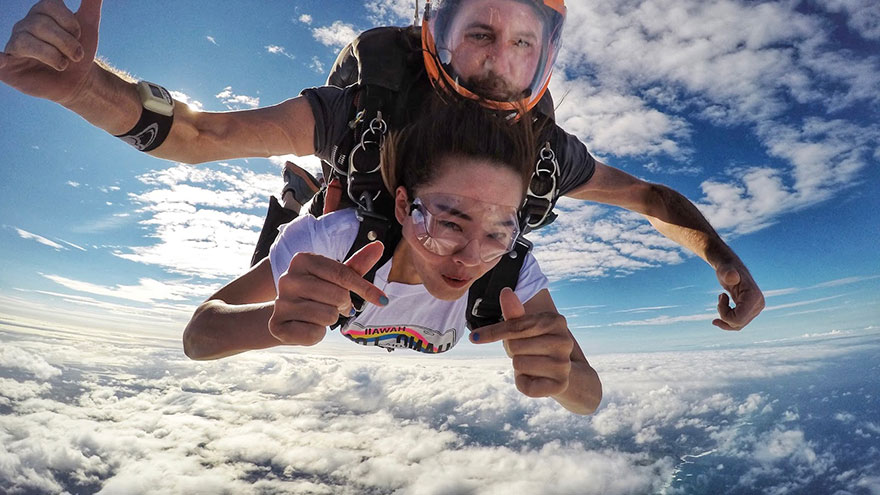Tandem Skydiving in Hawaii
Visitors to Hawaii may ache to see America’s island paradise from the air. For those who would rather not kick off their skydiving career with a solo jump, Oahu’s North Shore offers tandem experiences.
In a tandem skydive, starry-eyed passengers are free to stare at the islands from the aircraft window, knowing that their instructor will cheerfully see to their health and safety, then leap confidently into the skies over the Aloha State for a once-in-a-lifetime free fall.

What to Expect
In a tandem skydive, the instructor — a highly experienced, licensed and certified skydiver — wears a parachute large enough to fly safely with the combined weight of two passengers. The tandem student wears a specialized harness with four metal attachment points.
During the ride to altitude, the instructor connects the passenger to him. The pair leave the plane at the predetermined altitude, free fall over the islands for up to 60 seconds, then touch down in the grassy landing area after approximately five minutes of canopy flight.
Where to Go
Hawaii’s two tandem operations are at Waialua’s semirustic Dillingham Airfield. Aircraft taking off from Dillingham fly over the sandy ribbon seam between the North Shore’s turquoise ocean and soaring mountain range.
From the airplane ride to altitude to the parachute ride back down to the landing area, jumpers are treated to sweeping views of Oahu’s Diamond Head, Kaena Point and Pearl Harbor. On a clear day in the right season, skydivers can even whale watch from their seats on the plane.
Jump Altitudes
Tandem skydives can take place from heights of up to 20,000 feet over Oahu.
Though experiences from that altitude cost close to $1,000, the views are once-in-a-lifetime: At that altitude, on a clear day, eager skydivers can see not only the entire island of Oahu below the plane, but the surrounding archipelago as well.
Less-expensive tandem rides are available at more standard altitudes of 12,000 and 14,000 feet.
Warning
If you’re planning to scuba dive as well on your sojourn in Hawaii, take care: To be safe, you must leave ample time between your enjoyment of the two sports.
The human body requires about 24 hours to release the nitrogen that builds up during scuba diving, and the very serious condition called caisson sickness — “the bends” — results if the body has not finished the process of releasing that compressed gas. Plan accordingly.
You Might Also Like : Top 5 Amazing Beaches In the World

